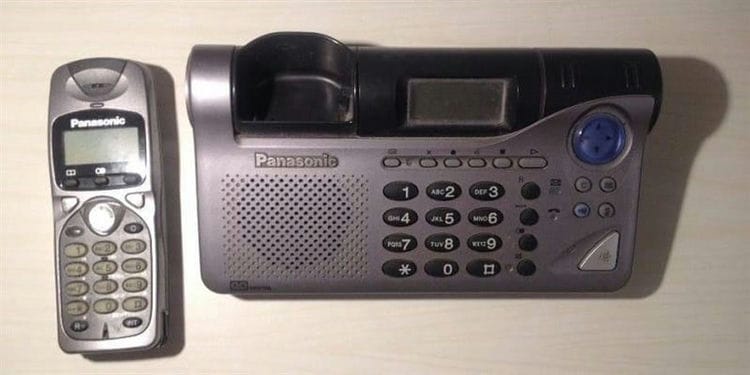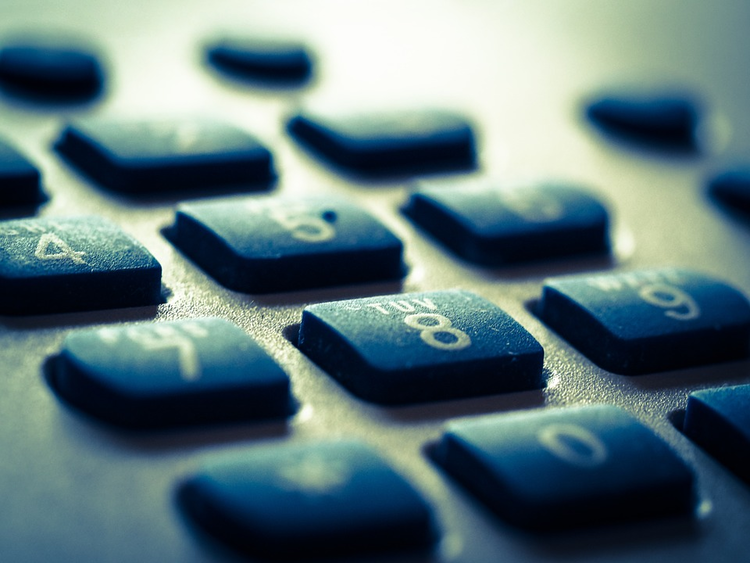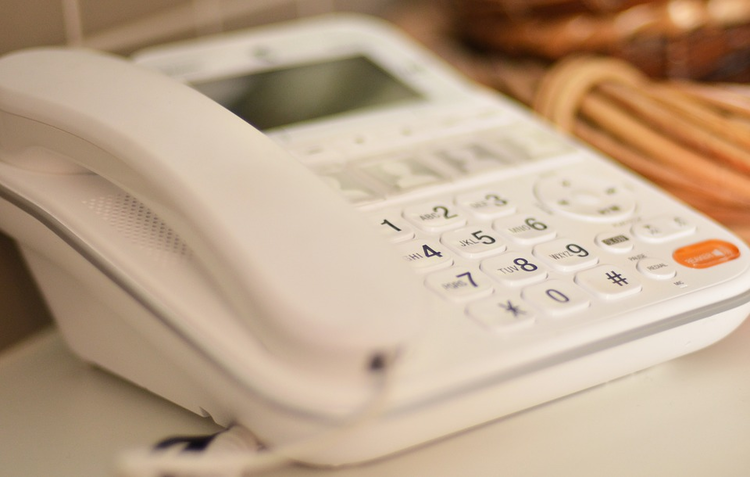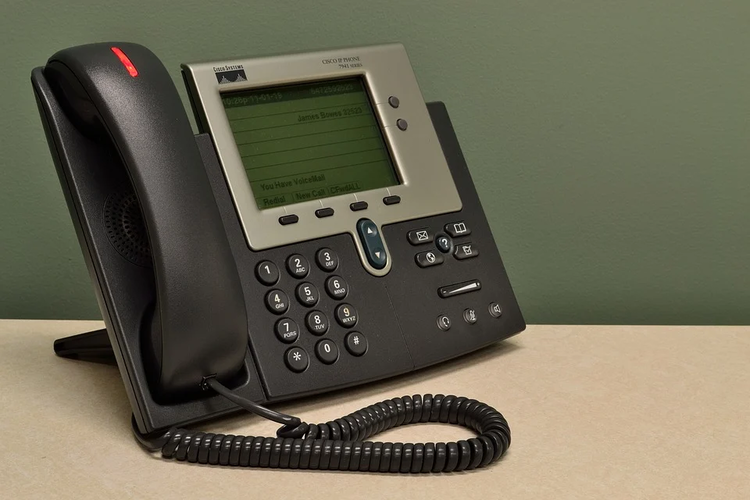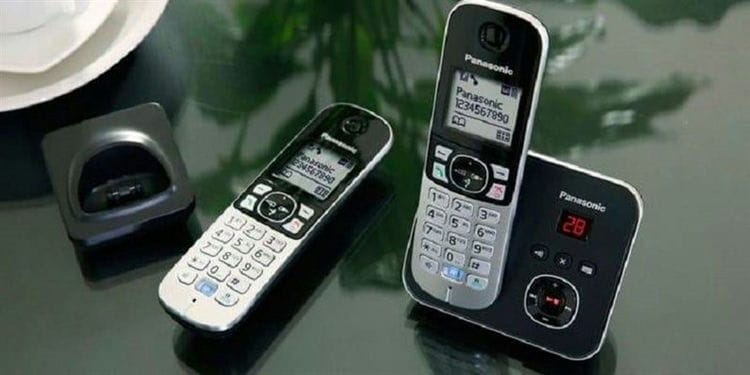Background
Having become the habitual owner of our pockets, the mobile phone is gradually replacing its stationary ancestor with a disk (or buttons) and a wire, although phrases like “Don’t hang up” are still used in conversations, and imagining someone talking on the phone more often we remember a man with a “pipe” tied to the main apparatus.
Indeed, for years we have used strumming (or popping) pot-bellied phones at home, remembered most of the frequently used numbers and kept small telephone books, where we wrote down (with a pen on paper) the numbers of relatives, colleagues, friends and acquaintances.
It should be admitted here that with the advent of digital telephones, nothing has changed in the lives of many home users. And in fact, why waste time on storing some combinations in memory, if you already remember this number, and with the appearance of buttons on the device, the process of dialing seven digits does not take any time at all?
But an affordable mobile phone appeared, then still quite unpretentious, with a “draconian” tariff. The first “popular” users of this device appeared. And very soon the user realized: to talk with any of the subscribers of both the mobile and city networks, there is no need to look for a notebook (after all, the necessary numbers are stored in the device’s memory), or even to get up from the sofa that has been haunted and won from the cat. You just need to pull your mobile phone out of your pocket.
It is fair to say here that our users differ in many respects from the consumers of Western tailoring: countries with a tech-savvy population have happily survived the era of home wireless phones, and are not particularly eager to part with it. In our country, if there was this type of technology, it was only in the most successful families, but for the most part it became widespread in the office environment.
Radiotelephones in the DECT standard.
The digital standard DECT (Digital Enhanced Cordless Telecommunications) describes the interaction of the base station with mobile handsets, while both voice and data transmission can be provided. Frequency range 1880-1900 MHz. There is an additional extension of the DECT standard – the GAP standard (Generic Access Profile), which means that the radiotelephone is compatible with equipment from other manufacturers that have the same DECT / GAP standard. For example, with radiotelephones of the same brand that support the DECT / GAP standard, you can use handsets from another manufacturer that support that standard. At the same time, you should understand that handsets from different manufacturers may have different functions and some of them may be inactive.
Advantages of the DECT standard:
- No interference during a conversation, unlike analog systems;
- Low level of exposure of the subscriber. The power of the radio tube is 10 mW;
- Protection from unauthorized access.
Disadvantages of the DECT standard:
- Small range;
- Low data transfer rate.
And so, summing up the above, we can conclude that using radiotelephones operating in this standard, we get a high-quality device with many useful functions, beautiful design and a high-quality level of communication. But there is only one problem that this standard does not allow to solve. This is the communication range. The maximum range for which radiotelephones operate in this standard is 100-200 meters, while it may be less if you use a radiotelephone in conditions where there is interference for radio wave propagation (concrete floors, brick partitions, etc.).
What to do, how to solve the problem of range?
This is where Senao cordless phones come to the rescue.
A few words about the brand itself. Senao was founded in 1979 and has two research laboratories and eight international subsidiaries around the world. Specializes in the development, supply and support of wireless communications, wireless PBX, long-range radio telephones and mobile phones.
GAP protocol
Most DECT phones have GAP support, with the exception of budget (affordable) models from certain manufacturers (for example, Panasonic KX-TG1105 and Siemens Gigaset A160 AOH).
GAP support allows:
- Register on one base up to 6 tubes of different series and even different manufacturers. Some DECT phone models allow up to 8 handsets to be registered to them. This opportunity is usually used to create a mini-PBX. In order for the additional handset to start working, it must be registered to the base. The procedure for registering an additional handset on the base is spelled out in the instructions for the DECT radiotelephone and depends on the model and manufacturer of a particular phone.
- Register one handset on 4 bases at once. This feature of the DECT phone is usually used when organizing telephone communications in an office. For example, in the case when it is necessary to make and receive calls from those places in the office, where radio communication between the handset and the base is cut off due to moving away from the base at a distance of more than 50 meters. In this case, the optimal solution would be to install an additional base in this “dead” zone and register the handset on it. Thus, in fact, the number of zones in which you can stay connected increases. However, it should be borne in mind that if during a conversation you move from one zone to another, or in other words, from the range of one base to the range of another, the conversation will be interrupted.
You can buy a DECT radiotelephone in almost any online store specializing in the sale of telephone equipment. One of these stores where you can buy a radiotelephone inexpensively is the online store SotMarket.ru. A huge assortment of goods, high-quality and efficient service makes the above store a leader in its segment
How to choose a radiotelephone (DECT)?
While city communications are several times cheaper than mobile communications, radiotelephones will be relevant and loved. Moreover, in terms of appearance, sound quality, useful options, they are not inferior to modern smartphones.
Features and examples of such phones
- The described standard is responsible for wireless communication at certain frequencies (in the range of 1880-1900 megahertz). In fact, DECT phones act as something like an analogue of a home or office mobile device.
This is a radiotelephone with a digital way of transmitting information. - In addition to providing the above information transfer, DECT is also responsible for the integration of voice communications. This system has become very popular in Europe and other countries.
- This is the most widely used standard at the moment. Its distribution was made possible by the ease of installation of networks.
- The main advantages of DECT include a high degree of communication security and adequate communication quality, excellent integration with corporate telephony, safety for the human body (less radiation received by the user) and good immunity to interference.
- Of course, there are also disadvantages to this standard. Among them: low speed of information transfer (in comparison with Wi-Fi) and relatively short communication range due to the fact that the system itself limits its power.
- More than 40 manufacturers of telecommunications equipment produce such systems for both home and corporate communications. Among them are such well-known companies as Panasonic, Ericsson and Alcatel.
Voice dialing
Everyone is already accustomed to communicating with their smartphones using voice assistants. Now radiotelephones also have this option. You can dial numbers and launch other phone functions using voice commands.
It will be useful to all users. But it is especially true for busy people who have every minute counting, and for older users who find it difficult to dial numbers every time. By the way, it is also much more convenient for a child to call his mother by giving a voice command than to find a record with the parent’s working phone.
What is DECT
The standard is based on digital data transmission between radio base stations and radiotelephones using Time-Division Multiple Access (TDMA) technology. Full duplex communication is achieved using Time-Division Duplexing (TDD).
The range of radio frequencies used for reception / transmission is 1880-1900 MHz. The working range (about 20 MHz) is divided into 10 radio channels of 1.728 MHz. Information exchange is carried out by personnel; using time division, 24 time slots are created in each frame, providing 12 duplex channels for voice transmission / reception. When establishing a call, 2 of the 24 time slots in each frame are used for conversation: one for voice transmission, the other for reception.
DECT voice / data channels are created using 10 carriers, time division multiple access (TDMA) and time duplex (TDD). The capacity (an indicator that takes into account the intensity of subscriber traffic, the width of the used frequency range and the coverage area, in Erlang / MHz / km2) of DECT systems is higher than that of other digital mobile communication systems and is 500 Erlang / MHz / km2 (this indicator for systems based on standards GSM and DCS-1800 is equal to 10 and 100, respectively).
Areas of application of DECT systems
The main areas of application of DECT systems are the following: microcellular communication systems are used for business (wireless corporate automatic telephone exchanges for medium and large organizations, distributed industries, factories, etc.), subscriber access devices to the public telecommunications network – as an alternative to standard wired connection (WLL) Single Cell Cordless Phones / Radio ATS – For Home and Small Offices.
In theory, one DECT radio base station can simultaneously provide up to 120 voice / data channels for wireless subscribers, so this equipment is suitable for organizing mobile communications where many subscribers are concentrated in a small area. This is important for both business applications and operators providing communications services. Connecting subscribers to communication networks using DECT equipment (solving the “last mile” problem) may be more cost-effective than standard cable connection, and in some cases – the only one possible. Such systems are faster to install, easier to expand, easier to manage, more reliable in exploitation.
The subscriber is connected using a fixed access unit (FAU), usually installed outside the home or office. It enables the user to connect common analog equipment such as telephones, fax machines and modems. WLL equipment provides full access to the entire telephone network service.
Examples of wireless subscriber access systems are Ericsson’s DRA 1900 and Lucent Technologies’ SWING.
Among single-cell radio automatic telephone exchanges for home and small offices, the most famous systems are Gigaset manufactured by Siemens, which consist of a base unit designed to connect 1-2 external city lines, and 4-8 radiotelephones. Similar devices from Samsung Electronics are being certified by the Ministry of Communications.
Wireless stations connected to the PBX are important primarily for organizations that need workers to be constantly available. There are many activities where answering the phone “He is in the office but is out at the moment” is totally unacceptable. In many areas, a five-minute delay in waiting for a specialist to “leave” can have serious consequences. The reader will easily remember and come up with a lot of similar situations.
Ensuring that the most valuable employees are always available, always “connected” (or, if you prefer, “tied”) is the main goal of installing wireless business telephony systems. The problem has several solutions, one of which is DECT microcellular telephone systems. They connect mobile subscribers to the PBX used in the organization, forming a single telephone system, similar in structure to conventional “city” cellular systems. The only difference is the scale. As a result, its own, microcellular, departmental communication network is created, serving only the employees of the organization. The radio coverage area is created by a network of radio base stations, each of which has a specific coverage area (microcell). Microcells partially overlap each other, which makes the transition from the coverage area of one base radio station to another invisible for a mobile subscriber. The base radio stations are connected to the central module, which processes the signals of mobile subscribers and provides an interface for docking with the automatic telephone exchange (via analog or digital lines). An example of a DECT microcellular telephone system is Ericsson’s Freeset.
The system consists of three main components:
- a radio module that provides processing of radio signals and an interface for connecting to the PBX;
- base radio stations (BR), which are connected with a cable to the radio module and provide digital radiotelephone communication with mobile subscribers;
- portable telephones, which are a handset with LCD.
Internal communication
Sometimes you need a pair of pipes in a set to organize a convenient intercom in the office or at home. It significantly saves time, because only company employees can communicate via the internal network, which means that external calls do not occupy the network.
Base radio station
It is a small (283x230x76 mm) device with two 167 mm antennas, usually mounted on the wall of a building. The number of BRs in the system is mainly determined by the size of the radio coverage area. The coverage area of one BR strongly depends on its location (on the street or in a building); its radius can vary from 30 m in a reinforced concrete building to 300 m in an open area. In essence, there is no hard and fast rule or formula for determining the number of BRs needed. Their placement is planned depending on the conditions of radio wave propagation. With the same area of premises, sometimes one BR is enough to cover three floors of a building, and it happens that you have to install three BRs on one floor. The more iron and concrete in a building, the worse the radio waves propagate and the more BR will be needed. To plan the deployment of the BR, a set consisting of a BR with an autonomous power source and a special radiotelephone showing the signal level from the BR is used. The number of installed BRs is also influenced by the type of activity of the organization. Typically, the traffic in sales and purchasing, customer service and technical support is much more intense than in scientific and technical organizations, hospitals and government agencies. Since one station simultaneously provides only eight voice channels, if it is necessary to serve a large number of mobile subscribers located in a small area, it may be necessary to install two or more BRs. Therefore, an experimental study of the planned radio service area is indispensable. showing the signal level from the BR. The number of installed BRs is also affected by the type of activity of the organization. Typically, the traffic in sales and purchasing, customer service and technical support is much more intense than in scientific and technical organizations, hospitals and government agencies. Since one station simultaneously provides only eight voice channels, then if it is necessary to serve a large number of mobile subscribers located in a small area, it may be necessary to install two or more BRs. Therefore, an experimental study of the planned radio service area is indispensable. showing the signal level from the BR. The number of installed BRs is also influenced by the type of activity of the organization. Typically, the traffic in sales and purchasing, customer service and technical support is much more intense than in scientific and technical organizations, hospitals and government agencies. Since one station simultaneously provides only eight voice channels, then if it is necessary to serve a large number of mobile subscribers located in a small area, it may be necessary to install two or more BRs. Therefore, an experimental study of the planned radio service area is indispensable. hospitals and government agencies. Since one station simultaneously provides only eight voice channels, then if it is necessary to serve a large number of mobile subscribers located in a small area, it may be necessary to install two or more BRs. Therefore, an experimental study of the planned radio service area is indispensable. hospitals and government agencies. Since one station simultaneously provides only eight voice channels, if it is necessary to serve a large number of mobile subscribers located in a small area, it may be necessary to install two or more BRs. Therefore, an experimental study of the planned radio service area is indispensable.
A four-wire cable is used to transmit signals between the BR and the radio module. Signal format – 2V + D. Four B-channels provide 256 kbps, which gives eight 32 kbps voice channels. The BR is powered either from the radio module or from a separate adapter. In the first case, the maximum distance of the BR from the radio module is 2.7 km, in the second it is limited only by the attenuation of the transmitted data and can be up to 3.5 km (without the use of additional equipment).
draw your attention to
The sent electronic message does not fall within the scope of the Law of the Republic of Belarus “On Appeals of Citizens and Legal Entities” No. 300-3 dated July 18, 2011 on the basis of part 4 of paragraph 1 of Article 25 of the said Law.
Freeset System Specifications
|
|
|
|
|
|
|
|
|
|
|
|
|
|
|
|
|
|
|
|
|
|
|
|
|
|
|
|
|
|
|
|
|
|
|
|
|
|
|
|
|
|
|
|
|
|
|
|
|
|
Share the material with colleagues and friends
Night mode
The option to turn off or decrease the volume of the ringtone at a specified time, for example, at night or when the baby is sleeping. Some models allow you to add a number of numbers to the list that can reach you at any time. For example, the number of the helper or the child.
Whatever you need – a cordless telephone or a wired telephone – you will find all this on the shelves of the “5 ELEMENT” stores.
Freeset system
The Freeset radiotelephone constantly polls the radio base stations, choosing the best available channel for communication, i.e. performing a continuous dynamic channel selection (CDCS) process. The search for the best channel occurs not only when the connection is established, but also during a conversation. Monitoring available channels takes longer than receiving and transmitting voice. The transition from one base radio station to another when changing microcells during a call is absolutely invisible to the subscriber. This property is very important, since due to the small size of the microcells, there can be several such transitions during one call. The CDSC process allows the use of the same time slots at the same carrier frequencies to connect different subscribers in non-overlapping microcells.
Speakerphone
When you want to organize a group conversation, for example, at a meeting in the office or at home to talk with friends, speakerphone can help to simplify communication. With the help of an external speaker, the handset allows a large group of people to participate in a conversation at the same time.
Glossary
|
|
|
|
|
|
|
|
|
|
|
|
|
|
|
|
|
|
|
|
|
|
|
|
|
|
|
|
|
|
|
|
|
|
|
|
|
|
|
|
|
|
Prospects for the development of DECT systems
The most attractive direction in the development of DECT systems is the ability to interact with GSM networks. Both of these standards are based on TDMA technology, but there is also a significant difference between them in the way of providing subscriber mobility and system capacity. The DECT standard is optimized primarily for use with heavy traffic, typical for those cases when a large number of subscribers are located in a small area (factories, business centers, exhibitions, etc.). A subscriber of DECT systems can only move at the speed of a pedestrian. On the contrary, the GSM standard provides for the possibility of a subscriber’s movement by car or train, roaming with other countries. But, as already noted, GSM systems have a lower capacity than DECT networks, and it is impossible to provide heavy traffic without installing additional GSM microcellular equipment.
Ericsson’s Freeset cordless phones are capable of operating in both standards. The radiotelephone automatically switches to the GSM network when the subscriber leaves the Freeset service area. Having become, for example, a subscriber of the “Mobile Telesystems” network, you can use such a phone as a standard cell phone. DECT allows data transmission, and therefore, the creation of wireless LANs based on subscriber access equipment.
An interesting direction in the production of PBX and the development of DECT is the embedding of DECT equipment into the PBX. Base stations can connect to these PBXs directly, without additional radio modules, and, in addition to wired analog and digital lines, support wireless communication. This saves money when organizing a departmental microcellular communication network. In addition, since PBXs generally support different types of trunks, you can connect lines that are not supported by DECT wireless systems. Ericsson BusinessPhone 250 can serve as an example of such a PBX. At the same time, the equipment for supporting mobile subscribers does not “eat up” the capacity of “internal analog” PBX subscribers, which is essential with a large number of mobile subscribers.
The next step in the development of the WLL system and business telephony is the use of ISDN and providing subscribers with standard basic access based on the DECT standard, which is capable of supporting ISDN communications.
According to the DECT Forum (an organization that includes the leading manufacturers of this equipment), since 1993 more than 5 million DECT lines have been installed in the world. Now 28 firms produce such equipment. 12 more lines will be added soon. It is expected that by the year 2000 sales will be more than 30 million lines per year.
Paging
The radio handset can be lost. This is especially true if children like to play with the phone, and adults prefer to talk far from the base. The lost tube option (paging) will help you quickly find your equipment without turning the whole apartment upside down. You press a special button on the base, and the handset answers with a call.
Portable radiotelephones
Freeset mobile subscribers use two modifications of radiotelephones for communication – DT 310 and 360. More functional device DT 360 is a compact device weighing 130 g with LCD display (2 alphanumeric lines, 1 character line) and 17 buttons (0 … 9, *, # and several service buttons – sending a flash signal, mute the microphone, selecting various functions through the LCD menu and activating them with the Yes / No button, adjusting the ringtone and sound volume in the handset). It is possible to connect headphones with a microphone. Depending on the type of battery used, it provides 5 or 9 hours of talk time and 25 or 45 hours of call standby time. Voice coding in the phone is performed using 32-Kbit / s AdICM, and to ensure protection against eavesdropping, speech encryption with a unique key is implemented,
Display type on handset
Most of the models come with monochrome small displays, which are enough to make using the technology convenient, including for elderly users and people with vision problems. However, there are models on the market with color and touch screens.
How secure is this connection?
- The earliest radiotelephones were not very convenient and, moreover, dangerous. The signal was often lost, and sometimes users could easily listen to other people’s conversations (including accidentally).
- With the introduction of the DECT standard, a lot has changed, since digital technologies have brought telephony to the proper level. Now an increased level of information security, cost-effectiveness and proper communication quality have been provided.
- The main range of the standard indicated above (up to 1900 megahertz) is preserved on all 5 continents, which means that it can be applied in different countries.
- DECT telephones, originally designed for office and home use, do not interfere with other equipment as they have a limited power level. This is beneficial for both users and manufacturers themselves.
- As already mentioned, unlike all radio communications that existed before, the DECT standard provides an increased degree of security due to the fact that proper registration / authentication protocols have been introduced, as well as protection against eavesdropping.
- Modern office systems operating on this system provide absolute user mobility within an organization or enterprise. In this case, the DECT system acts as a kind of “superstructure” for a corporate PBX.
Sources used and useful links on the topic: https://ixbt.market/articles/dect-phone.shtml https://HitTele.com/articles/radiophones-articles/vibor-radiotelefon.html https: //www.comfortclub. ru / publ / 44-1-0-649 https://5element.by/article/131321-pomosch-v-vybore/626473-kak-vybrat-radiotelefon-dect https://mob-mobile.ru/statya/ 4149-chto-takoe-telefony-dect.html https://www.osp.ru/nets/1997/05/142476

